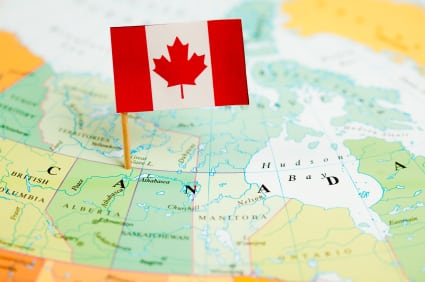A+ for Alberta’s Resource Driven Economy
- May 20, 2014
- By Cody Battershill
Conference Board of Canada Ranks Alberta as #1 in Report
Alberta, Newfoundland / Labrador and Saskatchewan have all earned top marks in a recent report released by the Conference Board of Canada (CBoC).
These resource-focused economies scored an A+ in the CBoC’s “How Canada Performs: Economy 2013” which evaluated 16 advanced countries of the world and Canada’s 10 provinces.
Report Card
1 – Alberta – A+
2 – Saskatchewan – A+
3 – Newfoundland / Labrador – A+
4 – Australia - A
5 – Ireland - A
6 – United States - A
7 – Norway - A
9 – Switzerland - B
10 – Ontario - B
11 – United Kingdom - B
12 – British Columbia - B
13 – Sweden - B
14 – Germany - B
15 – Prince Edward Island - B
16 – Austria - B
17 – Manitoba - C
18 – Quebec - C
19 – Japan - C
20 – Denmark - C
21 – Netherlands – C
22 – Belgium – D
23 – Nova Scotia – D
24 – Finland – D
25 – New Brunswick – D
26 – France - D
Highest Score
A score of A+ for Alberta, Newfoundland / Labrador and Saskatchewan means that they ranked better than any of the advanced countries included in CBoC’s report.
One factor that helped was increased income levels in these provinces, leading to more consumer spending and activity in the services and real estate sectors.
More Results
Apart from these three A+ scores, all of Canada’s other provinces earned either a B or lower and on average ranked fifth in comparison to the international countries included.
Norway, the United States, Ireland and Australia all had higher ratings than Canada with an overall score of A.
However, CBoC goes onto say in the report that Alberta is a class leader with the highest income per capita out of all provinces and countries evaluated, scoring an A+.
In 2013, the province beat out Norway by $10,000 for income per capita, the country who scored the next highest in this category. Alberta also scored an A+ for employment growth, gross domestic product (GDP) growth and received A’s for inflation and unemployment rate.
Key Factors
The overall goal of the CBoC is to accurately measure the quality of life in Canada for individual provinces and compare it to peer nations.
Three key factors are used, they are:
1 – Economic wealth – captured best by income per capita which reflects a citizen’s ability to purchase goods, services and other objects or materials which reflects a high standard of living. It is also indicative of a provinces ability to sustain itself through public spending on infrastructure, education and healthcare to name a few.
2 – Economic disadvantage and hardship – relates to unemployment rates and how they affect a nation’s productivity and GDP. High levels of unemployment are linked to high levels of income inequality, poverty, homelessness, criminal activity and poor health conditions.
3 – Economic sustainability– it is important for a province or country to be able to sustain itself over the long haul. Three sub-factors for this category include macroeconomic stability, economic growth and global integration.
While most Canadian provinces scored average in comparison to their international peers, these grades show sub-standard performance especially in the productivity category. Overcoming this will be a huge challenge for the provinces, but if anyone can do it, it’s natural resource rich Canada!
Learn more about recent economic activity in Calgary, Alberta and Western Canada at our Canadian Economic Articles today!






